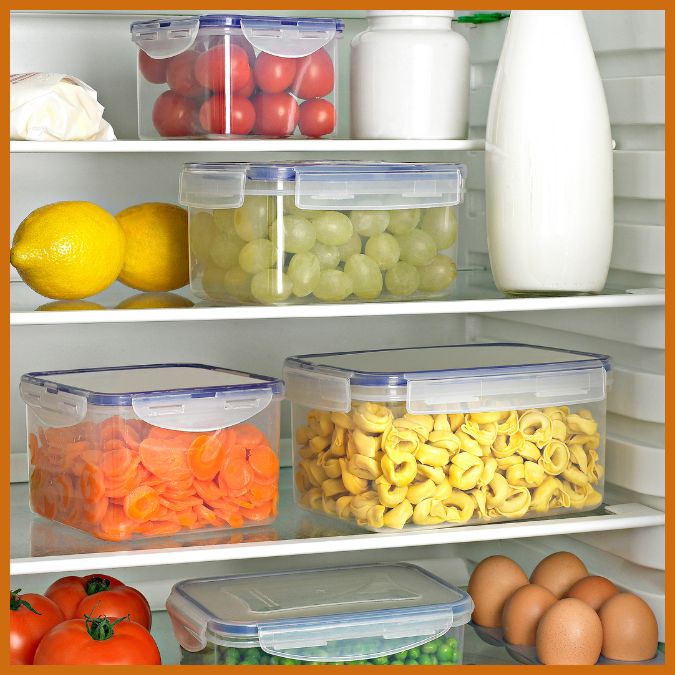Have you heard of the current trend of “Fridgescaping”? It’s all about making your refrigerator look like a work of art. It includes storing items in pretty bowls, lining up things neatly, and may involve adding a vase of flowers or a whole decorative theme (such as “Bridgerton” ~ see article linked above!) Much of it goes a bit over-the-top for me, but I do love the idea of an organized refrigerator, where you can quickly grab everything you need. A neat and tidy fridge also reduces food waste and saves you money.
Three Steps to Create Your Organized Refrigerator:
- Use Clear Containers and Labels for Easy Visibility
One of the biggest challenges of maintaining an organized refrigerator is food disappearing into the back where it gets forgotten and spoils. I’ve written about my favorite storage bin and why I love it ~ and the refrigerator is one of the best places to put it to use. This bin comes in a variety of sizes to keep like items contained and easy to find. Use it for condiments or produce or snacks or lunch-making items…the ideas are endless!
Leftovers will actually get eaten if you store them in clear containers instead of colorful plasticware. This allows you to quickly see what’s inside without needing to open multiple containers or move things around. Invest in a set of stackable plastic or glass containers. Note that square or rectangle containers are more space-efficient than round ones.
Labels can be a game-changer, especially if you share your fridge with family or housemates. Use dry erase markers to note what’s in each container and its expiration date. That way, you’ll know at a glance what needs to be eaten soon, minimizing food waste and ensuring that everything stays fresh.
- Follow the “First In, First Out” Rule
The basic principle is simple: when restocking your refrigerator, move older items to the front and place newer items in the back. This encourages you to use food that’s nearing its expiration date before opening fresh items. A great way to implement this is to designate a section of your fridge for “use first” items. For example, you can keep a small bin or tray on a prominent shelf with perishable foods that need to be eaten within a few days. You’ll be more likely to grab a yogurt or use those leftover veggies if they’re front and center rather than hidden behind newer purchases.
- Designate Zones Based on Food Type
Storing like items together helps your storage make sense. Designate spots for meat, veggies, snacks, dairy, etc. You’ll be able to find what you need easily, keep track of inventory so you know just what to buy on your next grocery trip, and quickly put away items in their proper home.
Additionally, not every part of your refrigerator is the same temperature, so it’s important to store different types of food in specific areas to maximize freshness. For instance, the coldest part of your fridge ~ usually the bottom shelves ~ is ideal for storing raw meat, poultry, and seafood, while the top shelves are better for ready-to-eat foods like leftovers, dairy, and drinks. This article offers detailed guidelines for organizing food to maintain optimal freshness and safety.
An organized refrigerator makes your life easier, cuts down on food waste, and helps preserve the freshness of your groceries. Start small, and soon maintaining an organized refrigerator will become second nature!
P.S.: I’d love to hear your thoughts on “Fridgescaping” in the comments below!
